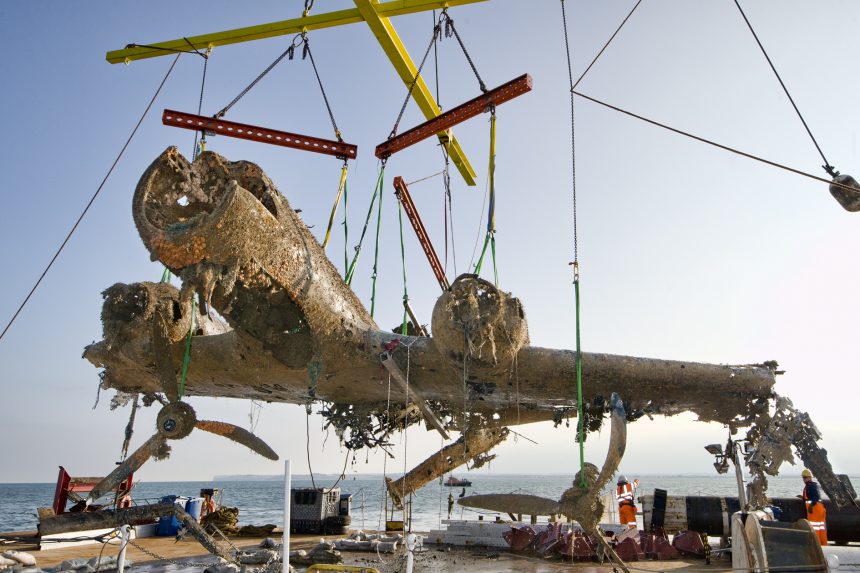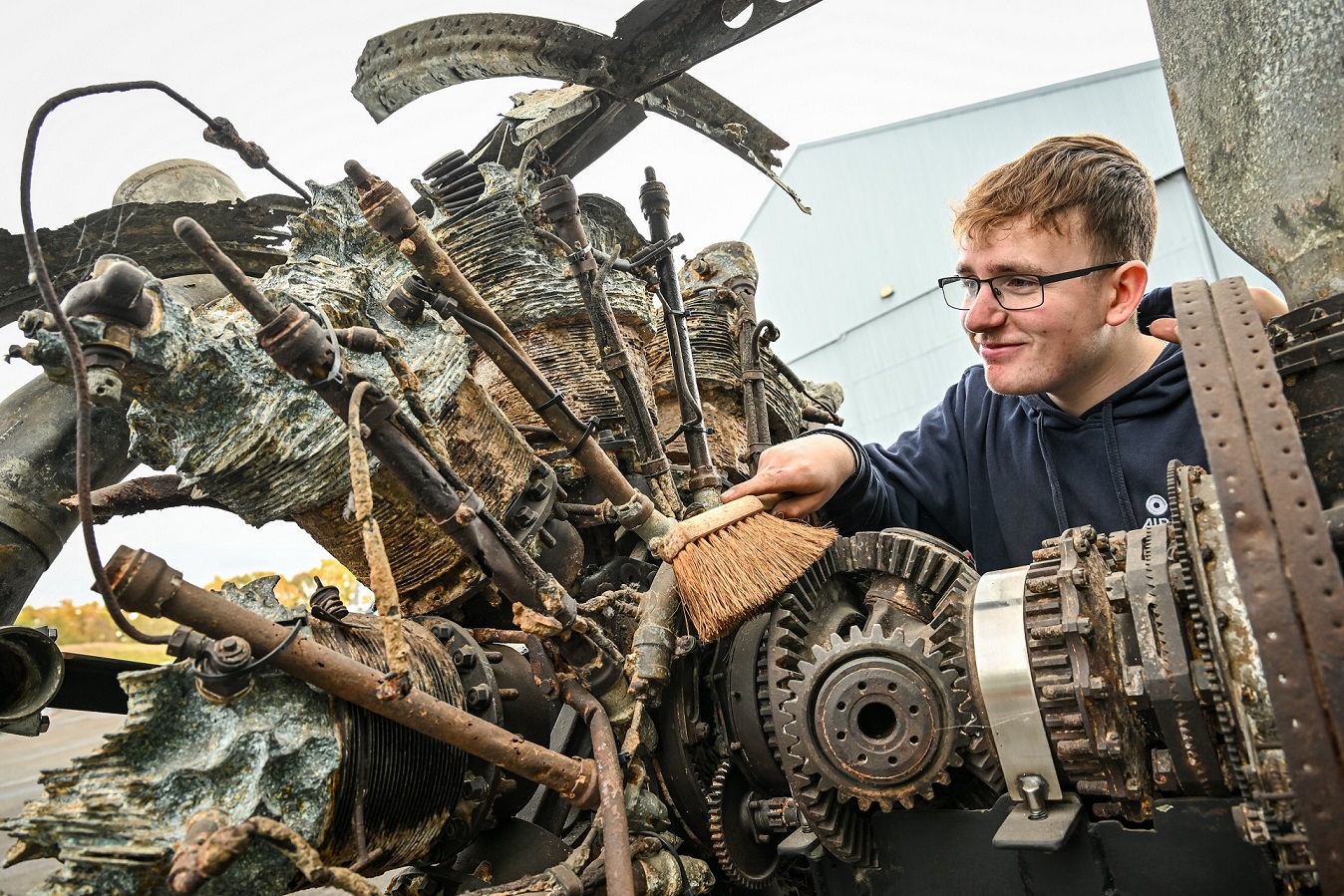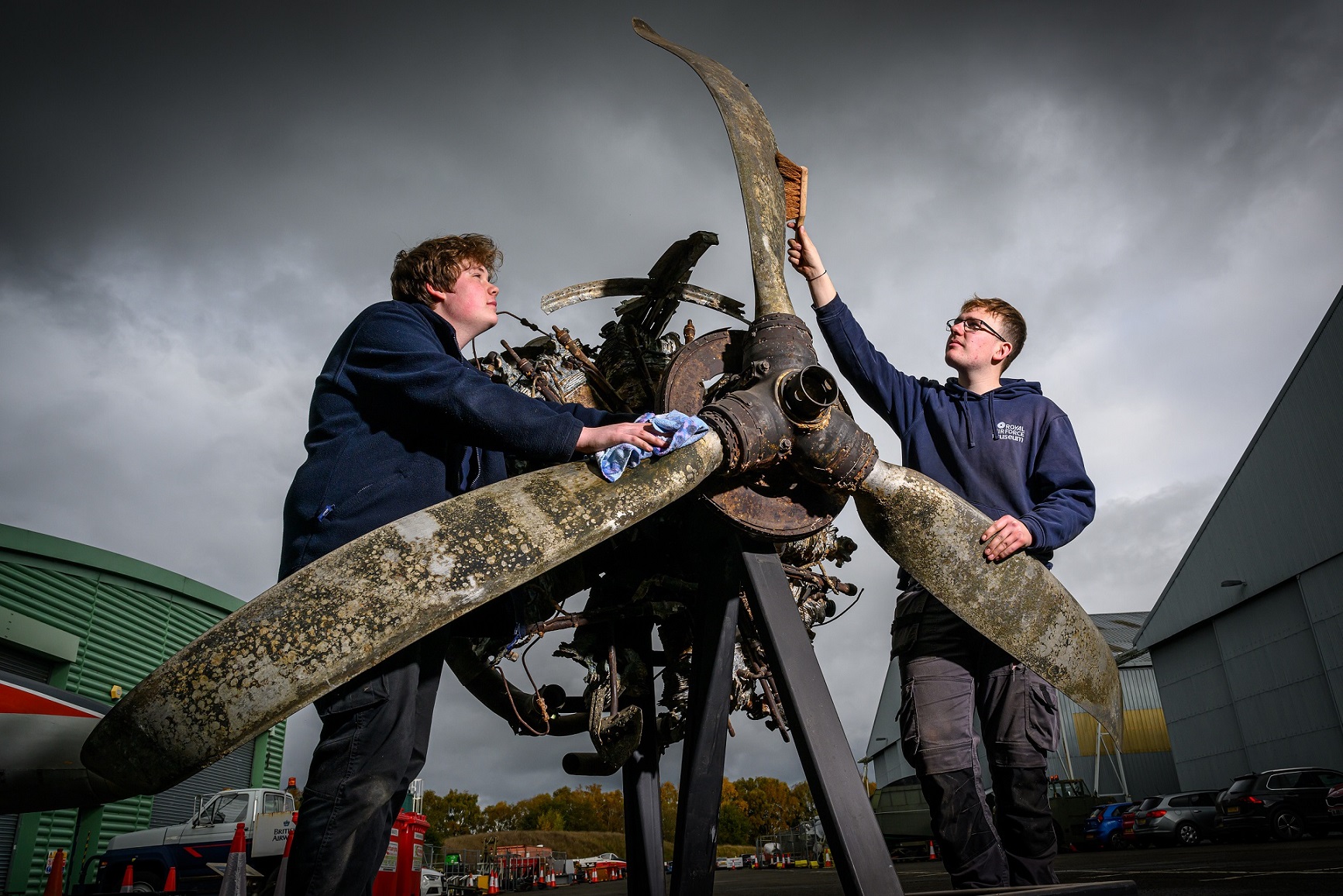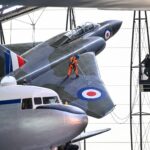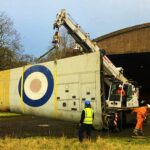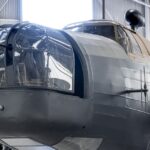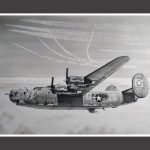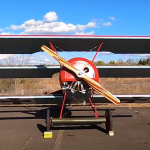Plans are underway at the Royal Air Force Museum Midlands for the wing section of an iconic World War II Dornier Do 17 to go on public display in early 2025. Salvaged after more than 70 years submerged beneath the waters of the Goodwin Sands, this rare artifact offers visitors a unique glimpse into the past. Nicknamed the “Flying Pencil” due to its slender fuselage, the Do 17 played a pivotal role in the early stages of World War II and is best remembered for its involvement in the Battle of Britain. Of more than 1,500 Do 17 bombers produced, over 400 were deployed by the Luftwaffe during the pivotal battle. Today, only one remains complete.
The wing section set to be displayed comes from this sole surviving Do 17, recovered in a landmark operation led by the RAF Museum in 2013. The dramatic moment the aircraft was lifted from the seabed and surfaced from the waters was broadcast live, capturing global attention. The recovery and subsequent conservation efforts have since fascinated not only aviation enthusiasts and historians but also scientists and engineers, all intrigued by the challenge of preserving this historic airframe for future generations.
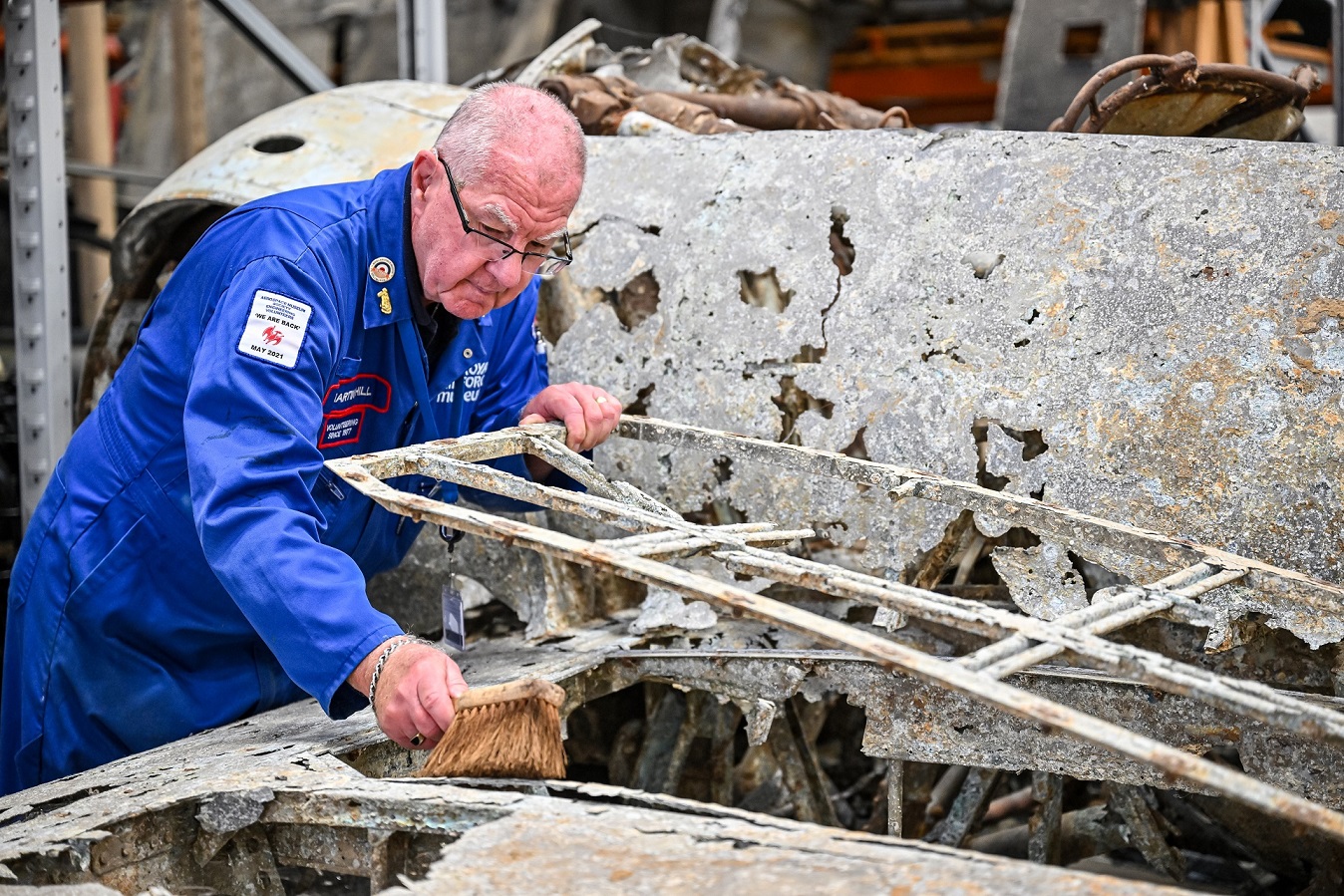
The Museum’s Do 17 was shot down on 26 August 1940, by RAF Boulton Paul Defiants of 264 Squadron. It then spent more than seven decades resting on the seabed. Following its recovery, led by the RAF Museum on 10 June 2013, the Do 17’s fuselage, wing sections, and smaller components, including the propellers and engines, were placed in purpose-built hydration tunnels. The aircraft was carefully sprayed with a low-concentration citric acid solution, which helped remove marine deposits and neutralised corrosive impurities within the aluminium structure. This technique was developed by the RAF Museum alongside scientists at the Imperial College London. After ensuring the solution had effectively stabilised the airframe, the fuselage was removed from the tunnels in September 2014, followed by the wings and engines in January 2015. Since then, the Do 17 has been housed in the Museum’s Conservation Centre, where it remains today. The fuselage will remain in store for the time being, owing to space constraints in the hangars, but the Museum retains the option to display it in future alongside the wing section.
“This is a remarkable moment for aviation history in Britain,” said Dr Harry Raffal, RAF Museum Head of Collections and Research. “After more than tens of years of intensive conservation, treatment and stabilisation, the Do 17 will go on public display. It represents not only the culmination of an extraordinary salvage operation but a unique way of understanding the Battle of Britain. The new year will see the Do 17 wing section, propellers, and engines situated alongside a Boulton-Paul Defiant, the very type that delivered the final blows to this Do 17. Our audience will see first-hand the thin edge of technology which enabled the RAF and Luftwaffe to fight out the most important battle of a generation.”

Visitors will have the opportunity to engage with the wing section, propellers, and engines, through enhanced interpretation and delve deeper into the aircraft’s story. Uncover the aircraft’s historical significance in aerial warfare, the events leading to its demise, and the extraordinary salvage operation and unique preservation techniques employed to safeguard its legacy. The Do 17 wing section will be available for public viewing from early 2025, subject to suitable weather conditions for the move. The Museum invites aviation enthusiasts, history buffs, and families alike to explore this unique addition to the collection. This extraordinary exhibition will be a chance to reflect on the aircraft’s role in one of Britain’s most defining moments in history. For more details or to plan your visit go to rafmuseum.org/midlands.







